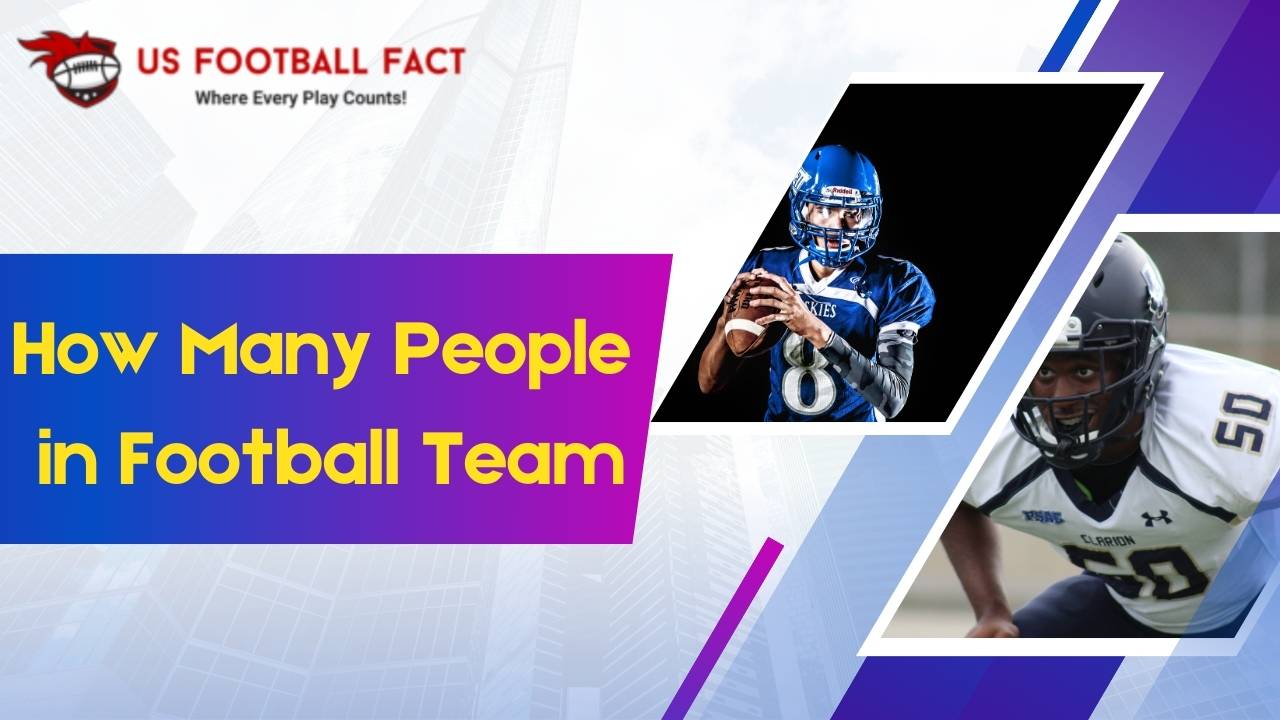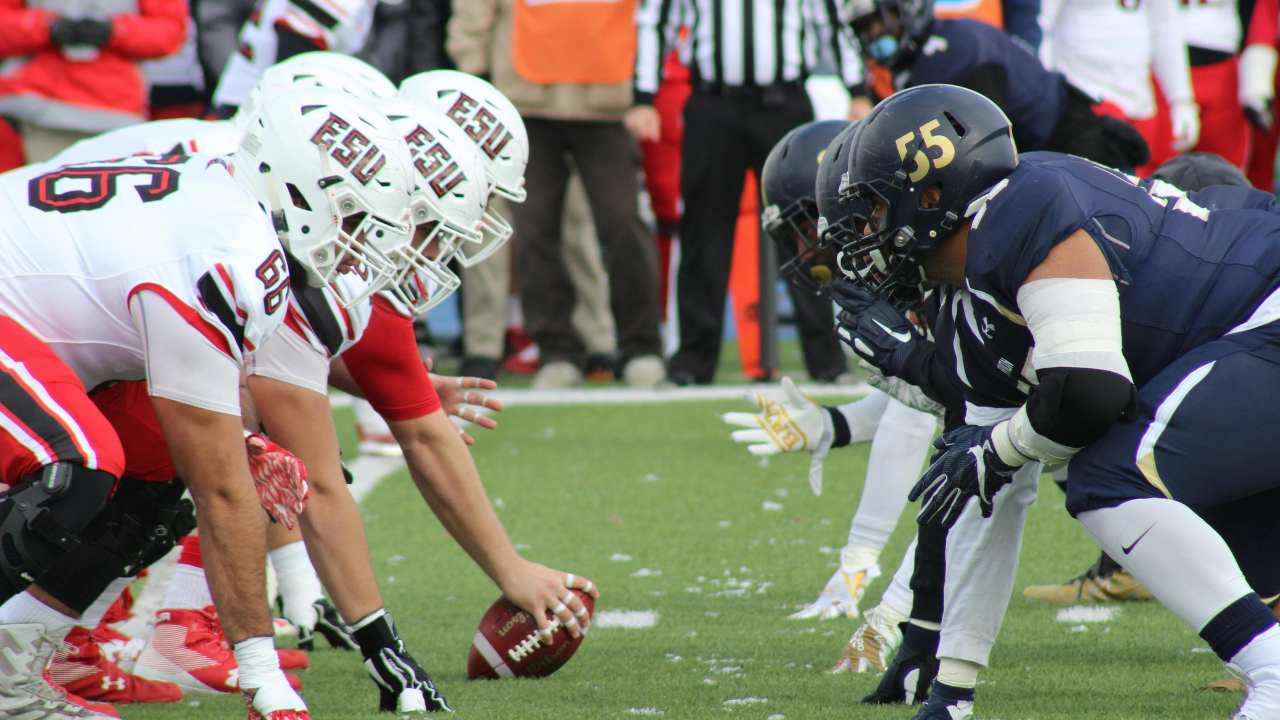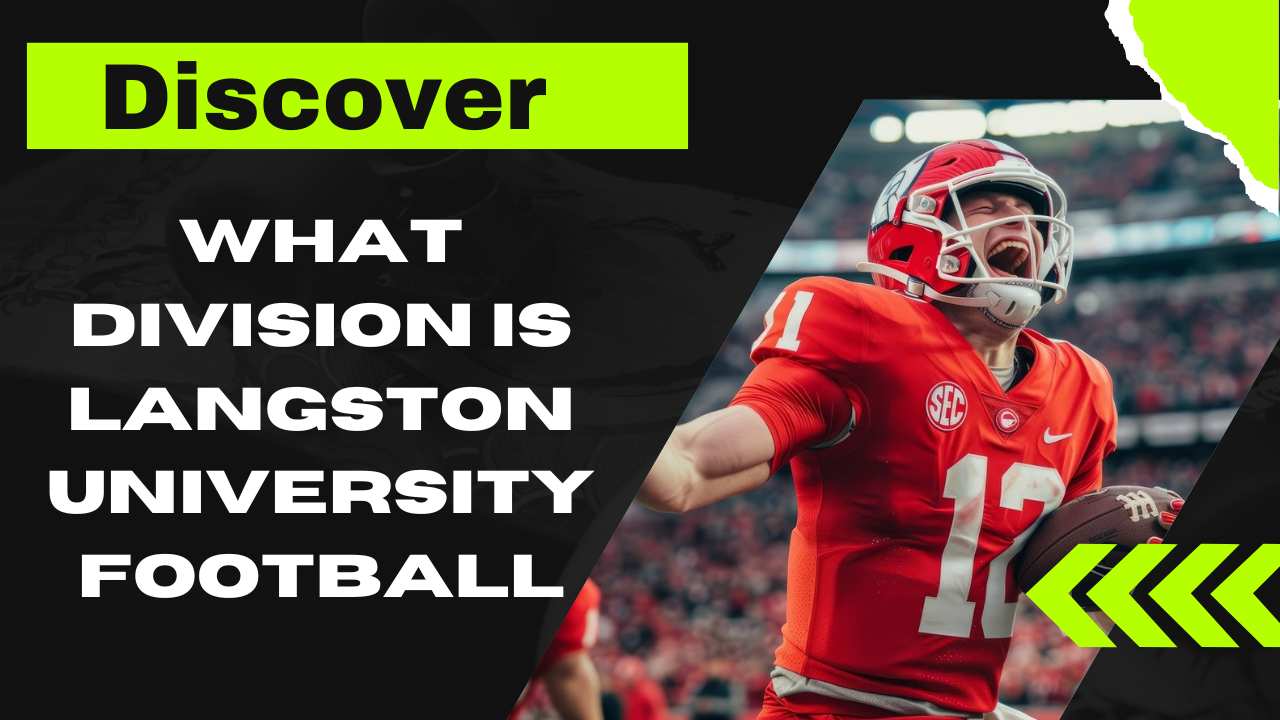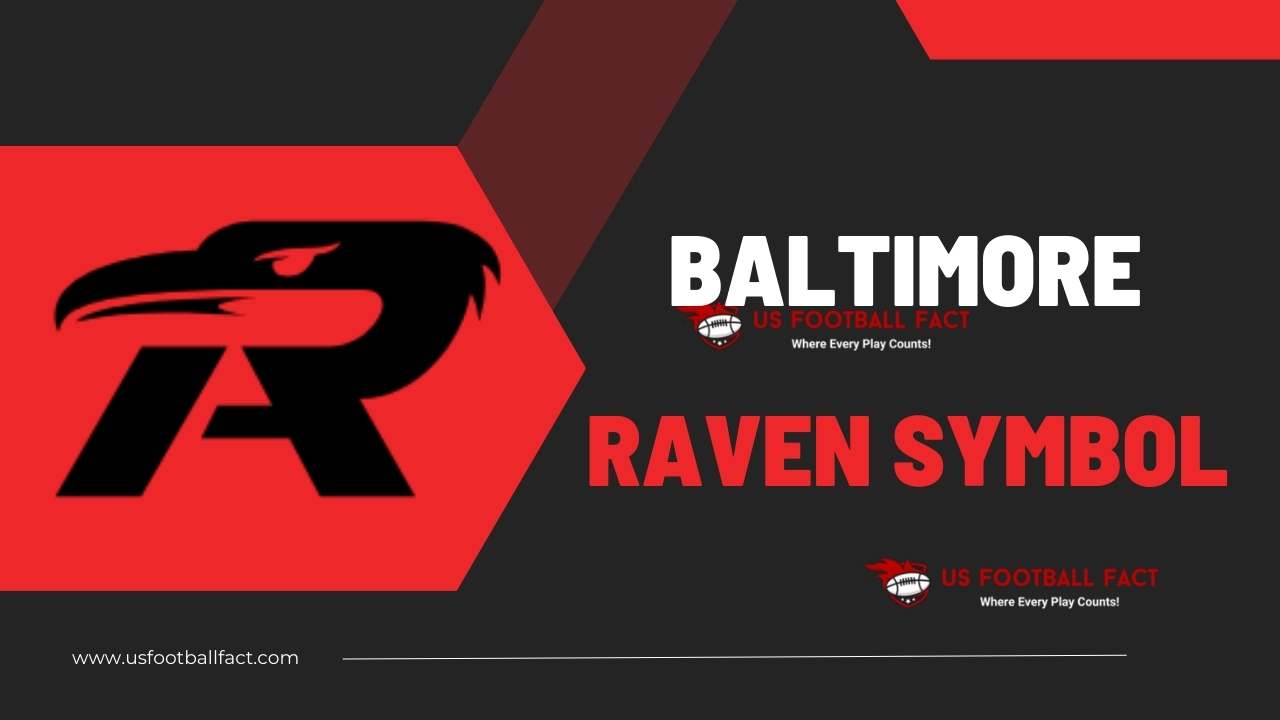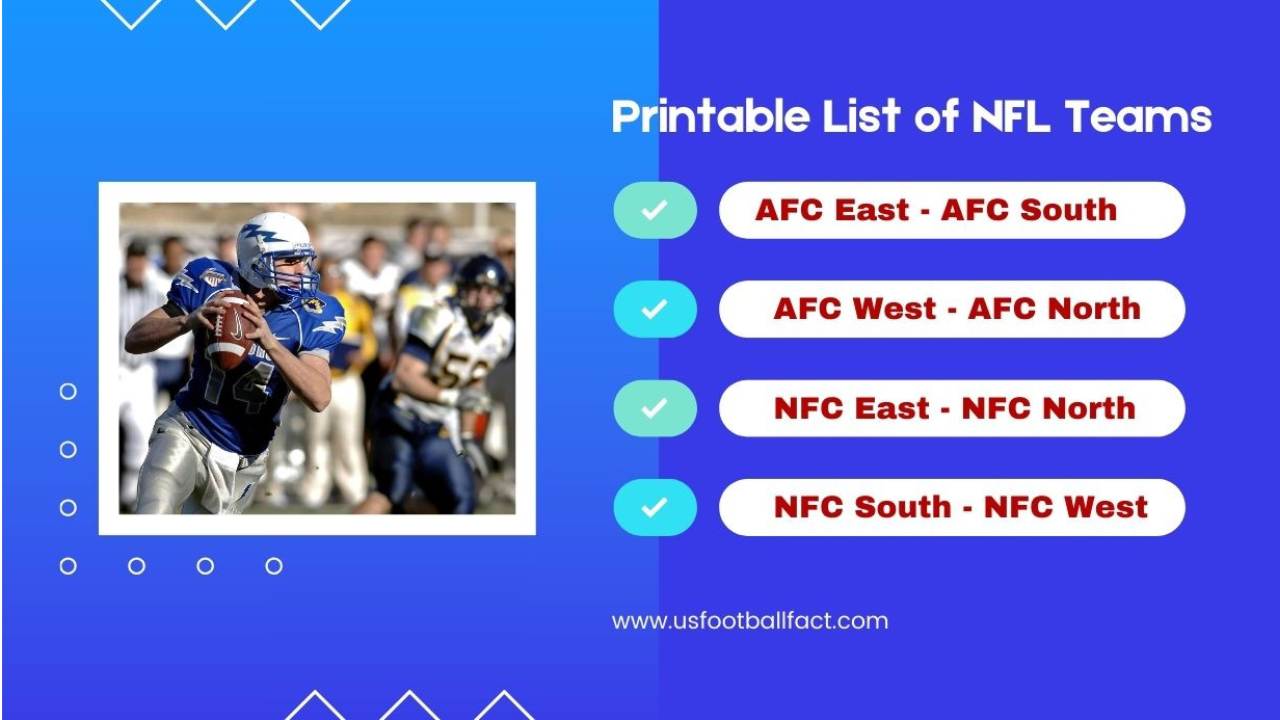American football is one of those cultural stalwarts that we all love, not just because of the way it exhilarates us but also because of what goes on behind its muscles. In essence, American football is a game about strategy, unity and teamwork intricacies that resonate at every level within. But how many people in football team, and how do their dynamics unfold inside and outside an arena? In this comprehensive analysis, we unravel some of the important elements in one of America’s favorite sports, like team size, roles as well as how coordination can be achieved amidst such chaotic confusion.
The Basic Structure of a Football Team
Before going into details it is necessary to know the basic structure of a football team. In its simplest form, an American football team consists of 11 players per side with one in offense and the other in defense. While the defense seeks to stop the offense from scoring any points and reclaim control, the offensive attempts to score points by advancing the ball into the other end zone.
Positions on a Football Team
At its core, football is a highly specialized sport where each player has specific tasks based on his or her position. These positions could be grouped into three main sections: offensive, defensive and special teams.
Offensive Positions
Football offenses include quarterback (QB), running back (RB), wide receiver (WR), tight end(TE) and offensive linemen(OL). Generally, quarterbacks are often seen as leaders on offense, with primary responsibilities that include calling plays and delivering passes to other players. Hand running backs carry balls to gain yards after being passed by QBs, while WRs catch passes from QBs before they run defined pass routes. TE may either block for OL or go out wide for passing attempts resembling WR’s lowly OL cover QBs, allowing RBs access to their zones.
Defensive Positions
On the other side of the ball, there are defensive positions that include defensive linemen (DL), linebackers (LB), cornerbacks (CB) and safeties(S). So, the purpose of the DL is to disrupt Oline during a running play or get to the quarterback during passing plays. On the one hand, LBs perform both run support and pass defense; CB covers WRs, specifically trying not to let them catch passes, while S provides additional coverage in the secondary as well.
Special Teams Positions
Although often overlooked, special teams are an integral part of any football game. These positions involve kicker (K), punter (P), and long snapper(LS). A kicker who attempts extra points or field goals after touchdowns earns points for his team, while a punter kicks the ball to the other team when offensive players cannot convert on fourth down. The long snapper snaps the ball back to the holder/punter during field goal/extra point attempts.
The Importance of Team Dynamics
Credit: www.pexels.com
Team dynamics and communication are very important for a football team to succeed since it comprises several players. Football teams are like well-oiled machines, where every player knows his role and performs tasks as a group towards the same goal. This is because of trust, honor among the teammates, and efficient communication. These include games outside and companionship, which may also impact performance.
The Impact of Team Size
The dynamics and success of a soccer squad are also influenced by its count of participants. A cohesive unit can still be maintained even with specialized positions within the context of 11 players on each side. For instance, more substitutes can be used in such games to avoid injuries, decrease fatigue, as well as maintain high levels of performance throughout the match. There could be problems with individual ego clashes if there are too many footballers involved, which could ultimately disturb their interaction inside the team. Conversely, having few numbers means a shortage of quality depth in different playing positions.
The Active Players: A Complete Line-Up
When play begins with whistle-blowers, American football teams have 11 members on either side at that time point. The offense is completely separate from defense in many sports; however not so in American football because they each require their own set of individuals serving designated functions. In this manner, defensive backs or linebackers may demonstrate personal capability without losing sight that they fit into a broader scheme. But it does not end here only—football is just as much about making up things on the spot as it is about running plays from the diagram—a deep bench is therefore necessary.
Substitutions and Special Teams
Team dynamics involve substitution as part of their activities whereby players are free to move out whenever there is a need for change in strategy during the games being played or any other situation affecting such decision-making processes especially when there are penalties resulting from certain actions taken by one party against another whom he/she feels should be penalized like giving away goals carelessly(Johnson et al., 2016). In kicking situations, special teams are often used, and they have different players who specialize in these vital moments that define matches.
Beyond the Field: The Rest of the Team
Despite having only eleven players on the field, a team is not limited to such number. It is because there are several support systems within this sport.
Practice Squad and Support Staff
The practice squad can be made up of about sixteen individuals who will become great players someday. However, the football team’s support staff encompasses much more than just playing personnel. While trainers, analysts, and equipment managers all help coaches devise strategies for winning games, it is their assistants who pull it all together as one cohesive unit under any circumstances during every game played in order to improve performance by maintaining a balance between offense and defense throughout each quarter with minimal penalties against either side (Johnson et al., 2016).
Roster Total: A Team Effort
We should be able to see where this is going by now. American football teams involve many people working together to facilitate everyday operations.
Practical Numbers
About fifty three make up the active roster on match days with another sixteen being part of practice squads. Usually, coaching personnel include head coaches, some coordinators, and numerous position coaches. Strength and conditioning specialists also play an important role behind curtains as well as nutritionists plus public relations team among other areas (Johnson et al., 2016).
College Football vs. NFL Roster Sizes
College football teams differ somewhat from those in professional leagues such as National Football League (NFL). NFL rosters are comprised of 53 players on offense and defense while college football ones have more numbers due to NCAA regulations on scholarships given out per school year, which vary depending on divisions like FBS or FCS level schools- Division I has most student-athletes but Division III schools do not offer athletic financial aid packages at all so they must rely solely upon academic scholarships instead while playing their sport (Johnson et al., 2016).
Shifting Sands
Fluid football team rosters often take in more than a hundred players, whereas the NFL roster is leaner and more focused on quality for higher competition and selection.
The Evolution of American Football Teams
They are not the same teams they used to be. They have evolved over time, just like the game itself and its commercialization.
A Historical Glimpse
Since smaller teams with fewer designated positions at the beginning of the game to now larger ones with many specialized units, it has been a remarkable change. As things keep escalating both culturally and financially so do numbers needed to run such operation as a football team.
The Team Behind the Team
Each member of support staff, each coach, and each player has an assigned role. The levels of this enterprise are labyrinthine, all marked with an unyielding pursuit for perfection across all scales.
Cultural Universality
Football teaches teamwork, discipline, and commitment that go beyond the confines of the pitch into business or community life.
The Impact of Team Size on Strategy and Performance
Numbering people making up any given football team does not happen by chance; it determines how the group plays out strategy-wise or otherwise.
Finding the Optimum
Increased numbers make bigger teams stronger, but keeping everyone involved can become problematic, while smaller teams mean frequent participation, but exhaustion could kick in pretty fast.
Case Studies: Notable American Football Teams
There have been particular football teams throughout history that not only stood out for their triumphs on the field but also had unique group dynamics with a cultural influence.
Untold Stories
What rosters like those one belonging to ’85 Chicago Bears or ’07 New England Patriots say about team size during a season or even single game?
The Future of American Football Teams
With advancing technology and changing sporting standards, What will happen to US football teams next is a mystery to us.
Innovations on the Horizon
Virtual training environments, data analytics and AI are all going to change how teams are organized and prepared. Still, sport will always remain a human activity with team dynamics being its lifeblood.
Frequently Asked Questions
How many people in football team?
Eleven players typically play simultaneously on an American football team.
How many players are on the field for each team during a game?
There are 11 fielded players in each match per group – offensive, defensive, and special teams.
Are there any restrictions on the number of players on a football team?
In the NFL, like professional leagues of America’s football, they could have up to fifty-three male squads, though only forty-six of them may dress up for games.
How is the team composition structured in American football?
This team usually splits up into positions like quarterback, running back, wide receiver, offensive lineman, defensive lineman, linebacker, cornerback, safety, and special teams players.
Do all the players on the team play at the same time?
No because of its specific position nature in American football, not every player appears on the field at a time. The coaches, therefore, make tactical substitutions based on game situations.
Are there different rules for the number of players in youth or amateur American football leagues?
Yes there are different numbers of players who can be part of a team for youth or amateur leagues; with smaller teams often being used to cater for younger or less experienced players.
Conclusion
The sheer size of an American football team along with its sophisticated layers reveals to us how collaborative efforts should work. It is worth noting that this interaction between players as well as their trainers and helpers serves both as an exciting sports plot and a model through which one may study pure teamwork. In many ways, actual combat in a football game mirrors struggle and victory common to collective human activities.
